Design
3 Fantastic Basement Ceiling Options
Quick Basement Options Summary
- Tray ceilings offer elegance and acoustic benefits, ideal for entertainment spaces.
- Drywall ceilings have a seamless finish and soundproofing, perfect for modern designs.
- Exposed ceilings emphasize industrial feel while maintaining utility access.
- Beadboard and coffered ceilings add architectural interest and balance style with functionality.
- LED lighting integration enhances ambiance and energy efficiency, especially with tray designs.
Introduction to Basement Ceiling Design
A ceiling is a commonly overlooked aspect of basement design, but you would be surprised how important it is for both lighting and visual appeal.
The right ceiling can make the difference between a dark and cold-feeling basement, and a bright and warming space.
There are a variety of different basement ceiling options to choose from.
We’ve narrowed down the top three most popular, trendy, and fantastic basement ceiling designs around.
If you have specifc questions visit BasementRemodeling.com.
1. Tray Ceilings: Elegance Meets Functionality
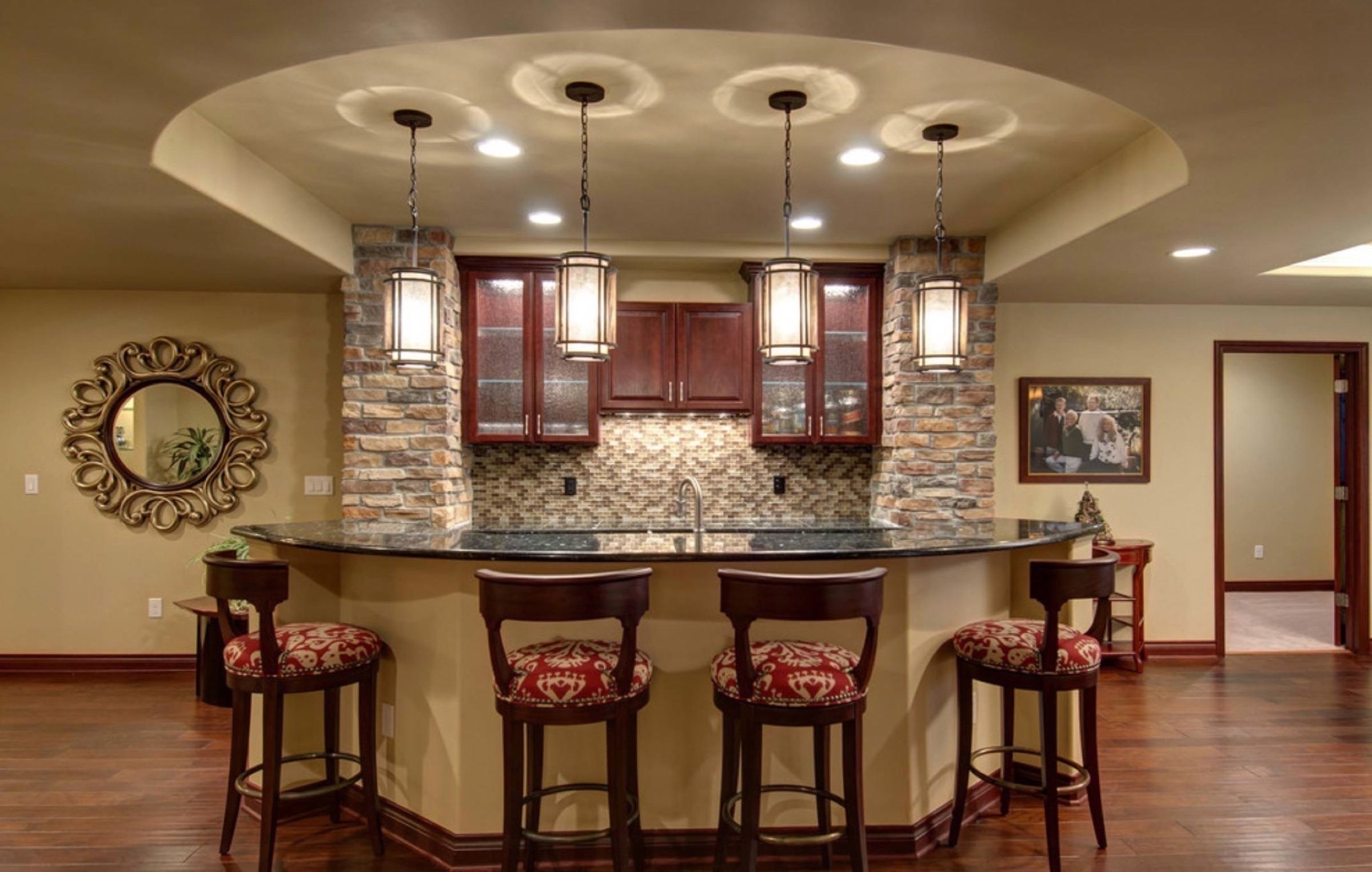 Half-tray rounded ceiling design showcasing a lovely basement kitchen
Half-tray rounded ceiling design showcasing a lovely basement kitchen
Design Versatility of Tray Ceiling
Tray ceilings, known for their recessed design resembling an inverted tray, bring depth and sophistication to any basement layout. Whether squared or rounded, they adapt seamlessly to various styles. For inspiration, check out the design benefits of tray ceilings.
Acoustic Benefits
The recessed structure of tray ceilings naturally dampens sound, making them ideal for home theaters or music rooms. Pairing them with acoustic panels further enhances noise reduction.
Lighting Integration
Hidden LED strips within tray recesses can create an ambient illumination without cluttering sightlines. LEDs not only enhance aesthetics but also improve energy efficiency, as highlighted by Energy.gov’s guide on LED lighting.
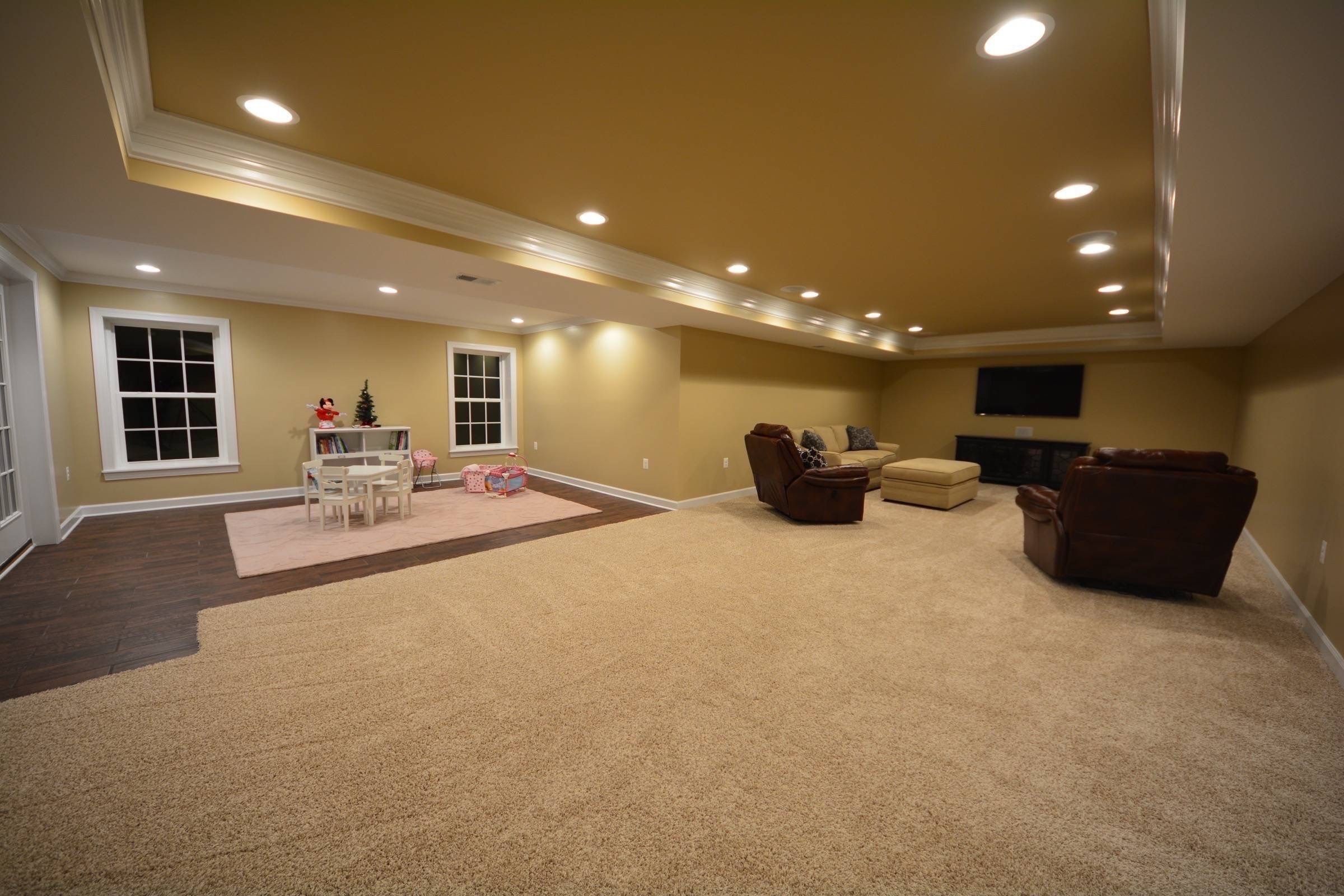 Large rectangular tray ceiling paired with an open-concept design and LED lighting
Large rectangular tray ceiling paired with an open-concept design and LED lighting
Overall, whether your basement is a simple open-concept design or a complex and fancy layout, tray-ceilings add an extra layer of visual aesthetic and elegance. Additionally, they provide excellent acoustic capabilities, so they’re a particularly worth-while addition to a music or entertainment room.
Tray Ceilings Cost
Tray ceilings cost $3 to $7 per square foot installed, including labor and materials. For a typical 15'x15' room (225 sq ft), the total cost would range from $675 to $1,575.
Breakdown:
-
Materials: $2.00 – $3.50 per sq ft
-
Installation labor: $1.00 – $3.50 per sq ft
Additional costs may include:
-
Carpenter/framing: $30 to $100 per hour
-
Electrician for lighting: $40 to $100 per hour
2. Hidden LED Lighting Basement Option
 Tastefully hidden LED-lighting maximizes your at-home theater experience
Tastefully hidden LED-lighting maximizes your at-home theater experience
In this golden age of technological advancement, every home in 2025 should have LED lighting.
LEDs are more energy-efficient, more powerful, and generate little to no heat compared to traditional light bulbs. They provide exceptional mood or atmosphere lighting for a basement space. In and of themselves, LEDs can be considered a ceiling option.
Hidden LEDs also pair quite well in combination with a tray ceiling.
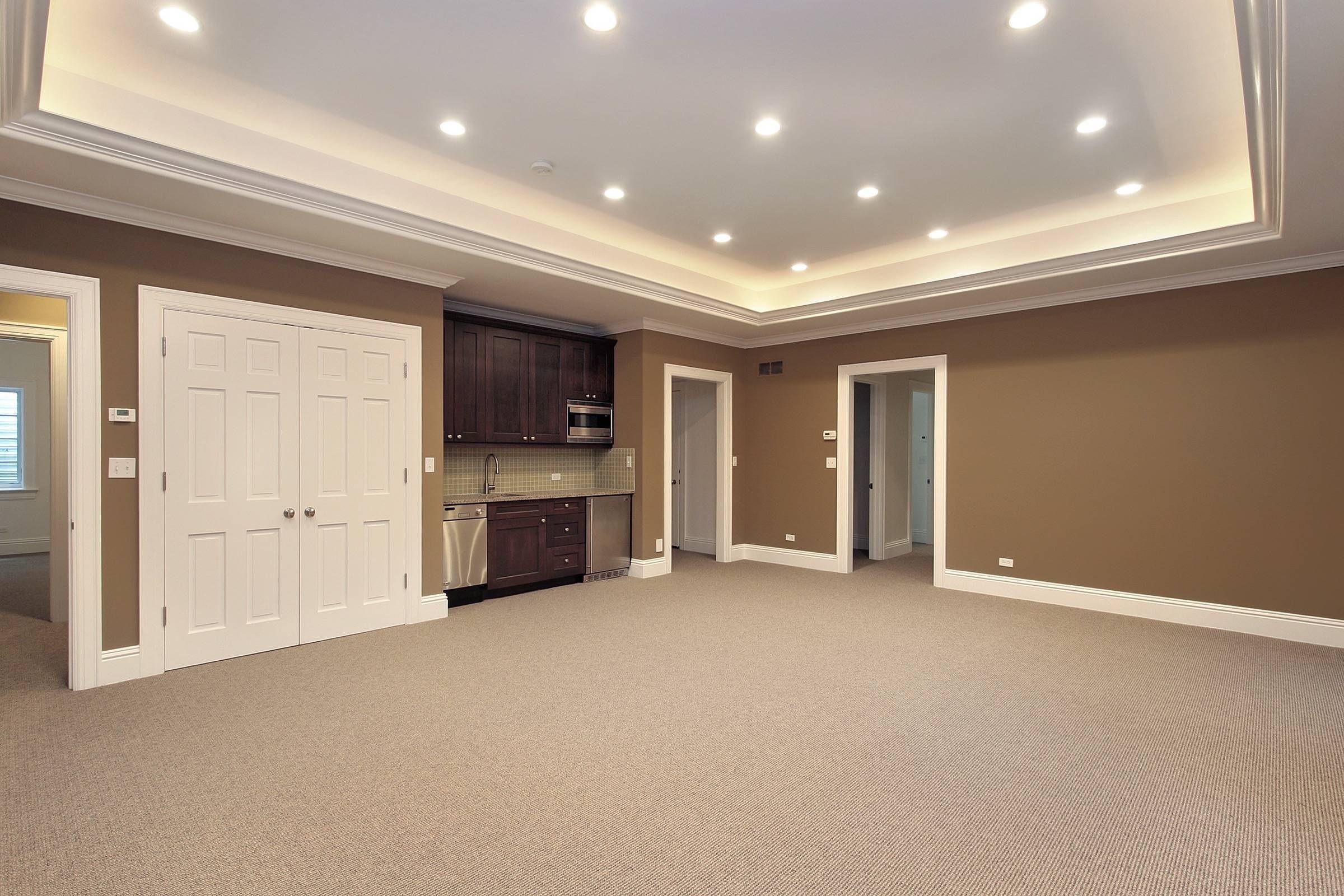 Hidden LEDs work quite well with a tray-ceiling design of any kind
Hidden LEDs work quite well with a tray-ceiling design of any kind
LED Lighting Integration Csot
LED lighting integration costs are typically separate from the ceiling installation costs. Basic LED fixtures can start around $100 each, with high-end options costing $500 or more. Installation costs for electrical work range from $40 to $100 per hour.
For a 225 sq ft room, assuming one fixture per 50 sq ft (5 fixtures total):
-
Fixtures: $500 to $2,500
-
Installation (5 hours): $200 to $500
Total LED lighting cost: $700 to $3,000
In conclusion, from least to most expensive (for a 225 sq ft room):
-
Drywall: $337.50 - $1,496.25
-
Beadboard: $675 - $1,350
-
Tray: $675 - $1,575
-
Exposed: $787.50 - $1,350 (additional cost)
-
Coffered: $2,250 - $9,000
LED lighting would be an additional $700 - $3,000 for any of these options. Remember that these prices can vary based on location, specific materials chosen, and complexity of the installation.
3. Drywall Ceilings: Sleek and Soundproof
Seamless Aesthetics
Drywall ceilings offer have a smooth finish that complements modern or minimalist designs. They effectively conceal pipes and ducts for a polished look.
Moisture Resistance
Opt for moisture-resistant drywall to prevent mold growth in humid basements. For more details on selecting the right drywall, refer to Lowe’s guide on drywall types.
Drywall Ceilings Cost
Drywall ceilings cost $1.50 to $6.65 per square foot installed. For a 225 sq ft room, the total cost would range from $337.50 to $1,496.25.
Breakdown:
-
Materials: $0.42 to $3.15 per sq ft
-
Labor: $1.08 to $3.50 per sq ft
Finishing costs (additional):
-
Level 0 (unfinished): $0.40 - $0.80 per sq ft
-
Level 5 (highest finish): $1.50 - $3.50 per sq ft
4. Exposed Ceilings: Industrial Chic
Utility Access and Cost Savings
Exposed ceilings simplify maintenance for HVAC, plumbing, and electrical systems while creating an industrial aesthetic. Painting beams in dark hues like charcoal or matte black enhances this modern style.
Styling Tips
Whitewashing beams can soften the industrial look while maintaining brightness in low-ceilinged basements.
Exposed Ceilings Cost
Exposed ceilings, while seemingly cost-effective, can actually add $3.50 to $6.00 per square foot to your project costs compared to standard drop ceilings. For a 225 sq ft room, this could mean an additional cost of $787.50 to $1,350.
Breakdown of additional costs:
-
Lighting: $2.50 - $4.50 per sq ft
-
HVAC: $1.00 - $2.00 per sq ft
-
Painting: $1.25 - $1.50 per sq ft
-
Other miscellaneous trades: $1.00 per sq ft
Note: These costs are in addition to the base construction costs and represent the premium for choosing an exposed ceiling design.
5. Box beam ceiling
Box beam ceilings are typically considered a high-end design choice, as they’re far more complicated, time-consuming, and expensive to design and install. However, their complexity is what makes them truly stand out from all other ceiling designs.
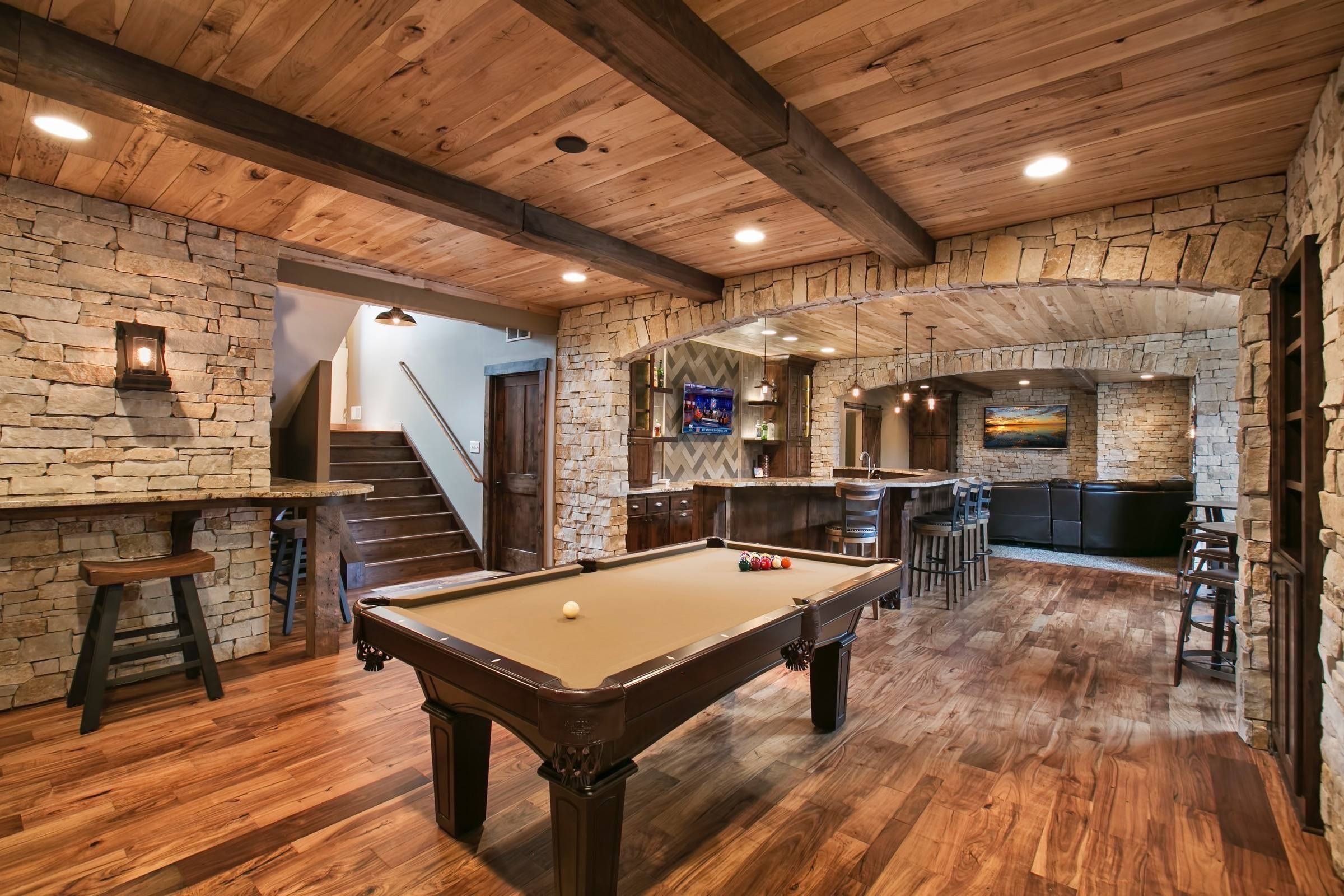 Rustic box beam ceiling accentuating a kitchen/bar basement space
Rustic box beam ceiling accentuating a kitchen/bar basement space
Box beam ceilings are primarily meant to dazzle and charm your guests with an air of luxury and sophistication, but they also have practical applications. They can help hide pipes and wiring from view, particularly for basement remodeling projects.
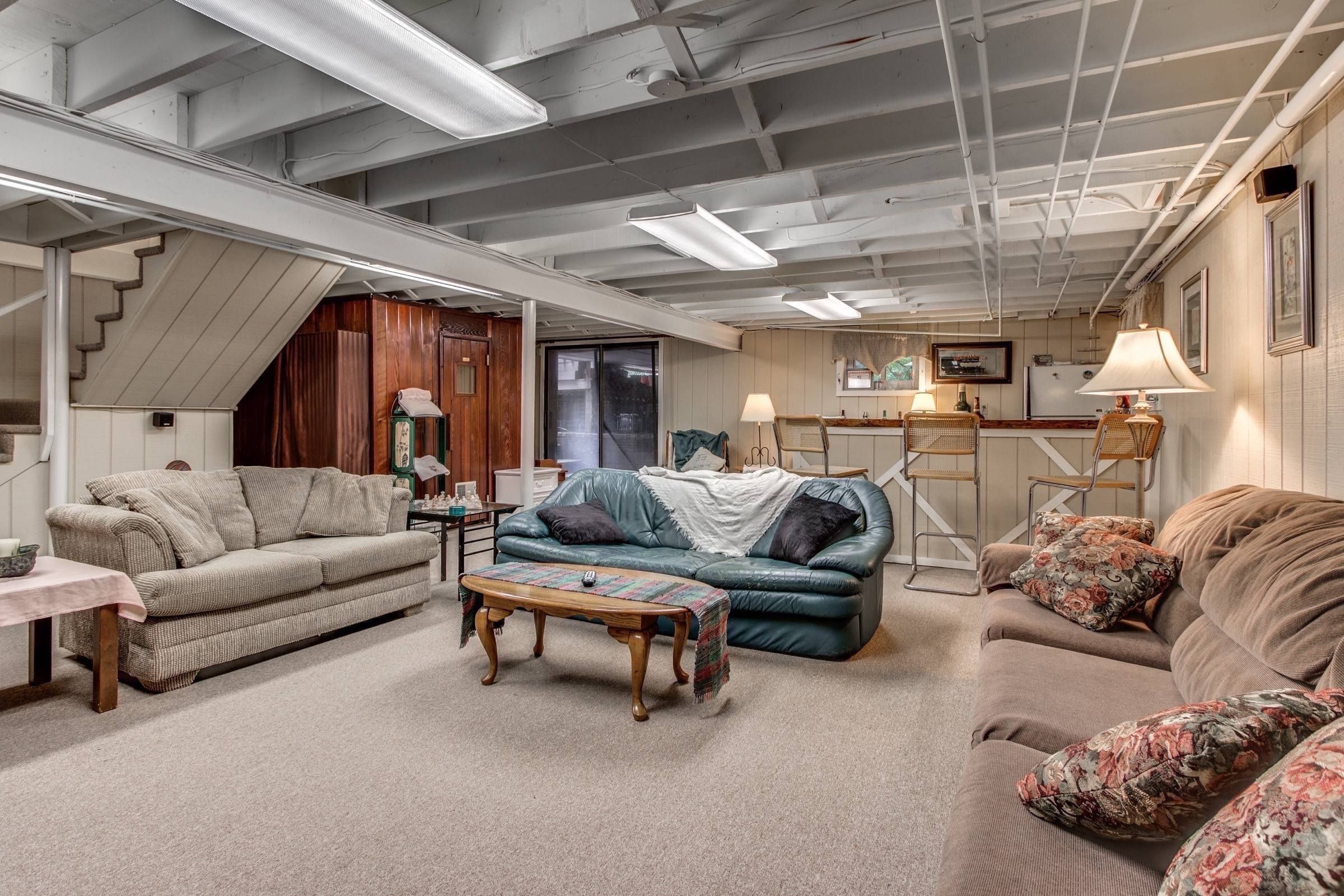 Box beams can provide practical solutions to noticeable wiring and pipes
Box beams can provide practical solutions to noticeable wiring and pipes
FAQs: Basement Ceiling Options
1. What is the most affordable basement ceiling option?
Painting exposed beams or installing beadboard are budget-friendly choices that still elevate your basement’s style.
2. How can I make my basement ceiling moisture-resistant?
Use moisture-resistant drywall or PVC beadboard and ensure proper ventilation to prevent mold growth.
3. Are tray ceilings suitable for low basements?
Yes, tray ceilings can create an illusion of height by adding depth and visual interest to low-ceilinged spaces.
4. How do I choose the best lighting for my basement ceiling?
LED lighting is ideal for basements due to its energy efficiency and ability to enhance ambiance when integrated with designs like tray ceilings.
Conclusion
The right ceiling option can transform your basement into a functional and aesthetically pleasing space. From the elegance of tray ceilings to the industrial charm of exposed beams, each option offers unique benefits tailored to different needs.
For more ideas on how to remodel your basement ceiling, explore basement remodeling ideas or consult professionals at BasementRemodeling.com.
By prioritizing factors like moisture resistance, acoustics, and accessibility, you can create a vibrant extension of your home that meets both practical and design goals!

